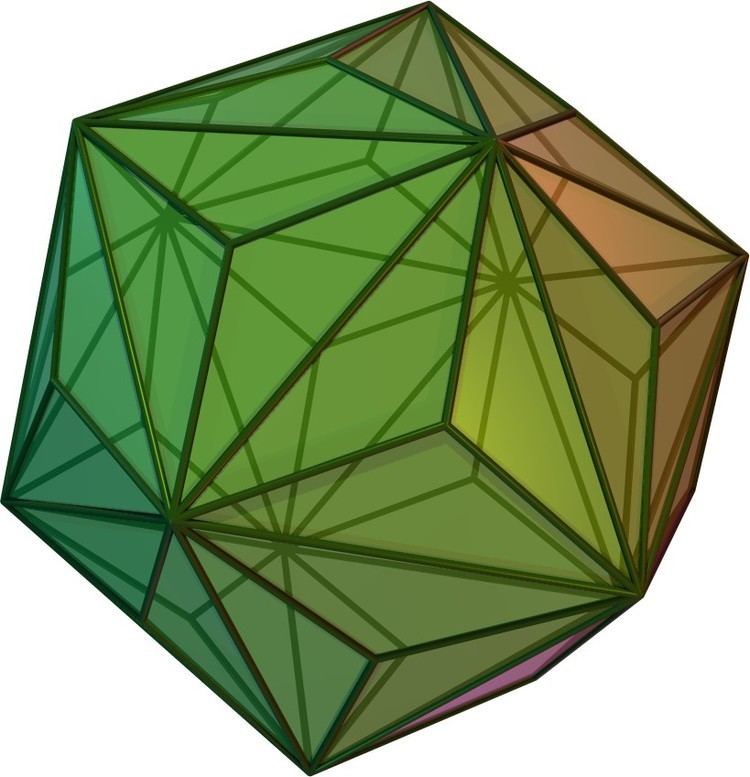 | ||
In geometry, the triakis icosahedron (or kisicosahedron) is an Archimedean dual solid, or a Catalan solid. Its dual is the truncated dodecahedron.
Contents
Orthogonal projections
The triakis icosahedron has three symmetry positions, two on vertices, and one on a midedge: The Triakis icosahedron has five special orthogonal projections, centered on a vertex, on two types of edges, and two types of faces: hexagonal and pentagonal. The last two correspond to the A2 and H2 Coxeter planes.
Kleetope
It can be seen as an icosahedron with triangular pyramids augmented to each face; that is, it is the Kleetope of the icosahedron. This interpretation is expressed in the name, triakis.
Other triakis icosahedra
This interpretation can also apply to other similar nonconvex polyhedra with pyramids of different heights:
Stellations
The triakis icosahedron has numerous stellations, including this one.
Related polyhedra
The triakis icosahedron is a part of a sequence of polyhedra and tilings, extending into the hyperbolic plane. These face-transitive figures have (*n32) reflectional symmetry.
